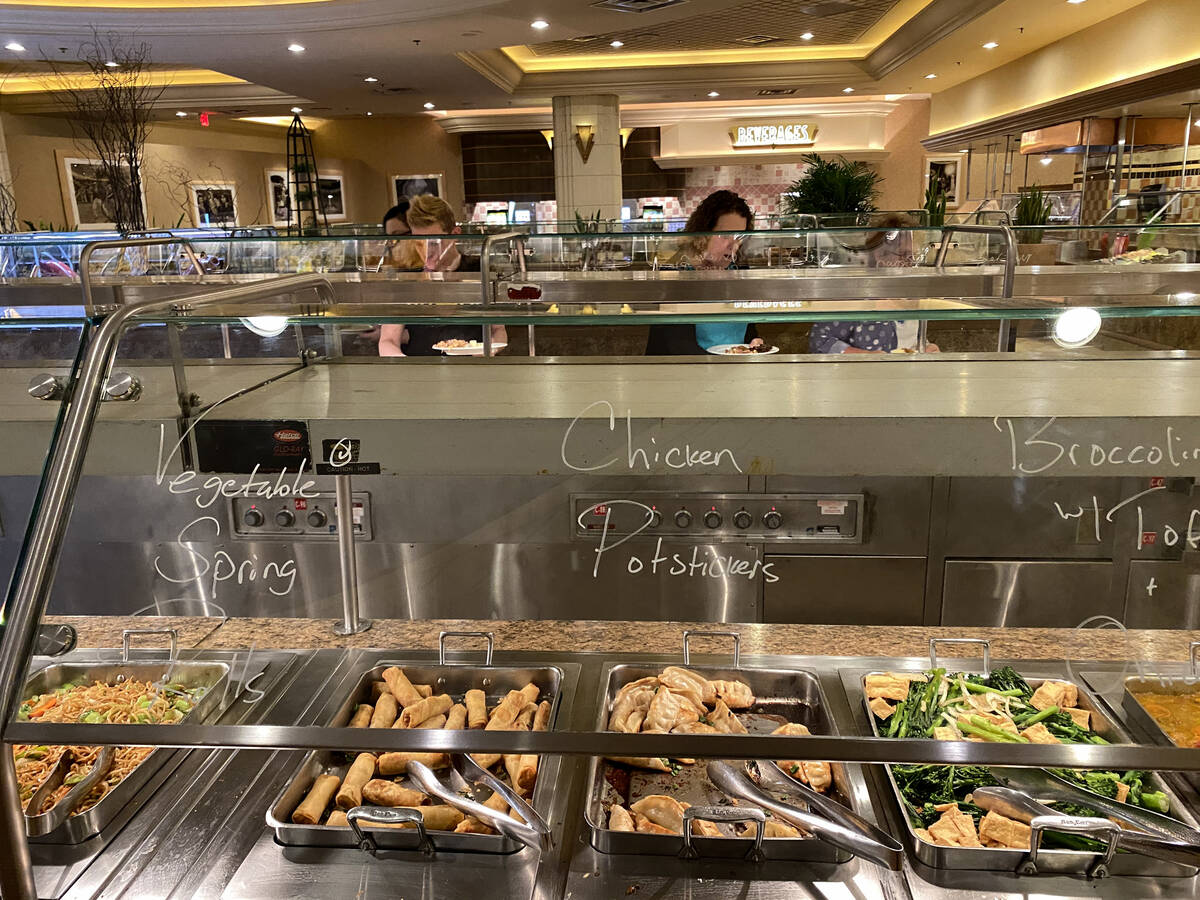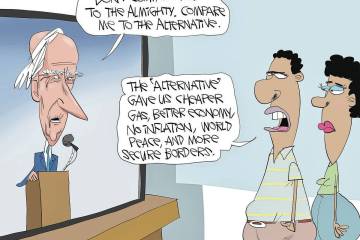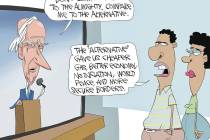COMMENTARY: Las Vegas has a food waste problem
It is all about the buffets.
People come to Las Vegas for a lot of reasons. Some come for conventions. Some come for the magic shows, Cirque du Soleil or Celine Dion. A lot of people come to gamble. Some come purely for the spectacle of it all. But everyone who comes to Las Vegas knows about the buffets.
Those legendary Las Vegas buffets — with everything from salad to sirloin — fuel the trips of more than 42 million visitors per year. Caesars Palace’s Bacchanal Buffet alone offers more than 500 food items, serving more than 3,500 visitors daily. The buffets are “all you can eat,” but not all is eaten. Inevitably, some of that food goes to waste.
And that is a microcosm of what happens at the national level. According to the U.S. Department of Agriculture, about 30 percent to 40 percent of the U.S. food supply is wasted. Some of that waste is caused by food spoiling, but the vast majority of it is food that was purchased but not eaten, like the food presented on display at Las Vegas buffets.
Food waste creates myriad economic challenges, including the expense and labor involved in producing the food in the first place, the fuel and transportation costs of getting it from farm to market, the costs of handling and selling the food and, finally, the value of the food product itself. The USDA estimates the true cost of food waste at about $218 billion per year.
Simply put: Food waste, as a category, is a large and growing contributor to the detrimental impacts of waste on the environment and the economy. It also impacts world hunger.
Although the United States currently produces twice as much food as it needs to serve its 330 million citizens, according to analytics firm SAS, roughly 54 million people in the U.S. are food-insecure. In Nevada alone, there are more than 373,000 people experiencing food insecurity, many of them children.
Las Vegas produces more than 5 billion pounds of waste per year. Most of that waste — food and all — ends up at the landfill. If all of that wasted food made its way to food pantries or shelters, there would not be any hunger. The food exists to solve that problem, but instead of going to good use, it goes to landfills.
Given the vast amounts of food produced in Las Vegas at its more than 40 buffets and more than 4,000 restaurants, it is without a doubt one of the leading contributors to the abundance of food waste in the United States. The Strip alone has more than 30 resorts, each with restaurants and many with buffets. Each produces food waste.
One novel method of diverting this waste from landfills in Las Vegas is the pig farm. Resorts such as Aria, Bellagio, Luxor, and The Venetian send mountains of food waste to Las Vegas Livestock, about 30 miles northeast of the city. There, the farm’s 4,000 or so pigs eat roughly 20 tons of food waste per day — all from the Strip. But that 20 tons is only part of the problem.
The true magnitude of the food waste epidemic in Las Vegas is likely unknowable. But given that Las Vegas consumes nearly 30 tons of shrimp per day alone, the total amount of food consumed — and wasted — is colossal.
Pigs alone will not solve this problem. Las Vegas, as a global leader in hospitality, must commit to a more sustainable solution for dealing with food waste. More of it must be diverted from landfills, and less of it must be created in the first place.
Food waste is a problem with economic, societal, environmental and moral implications. We must come together to resolve this crisis.
Nate Morris is chairman and CEO of Rubicon, which helps businesses manage waste and recycling issues.






















